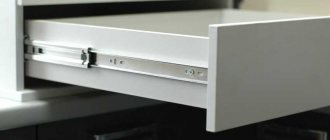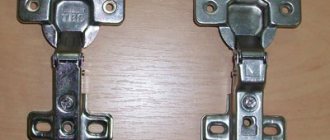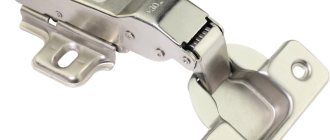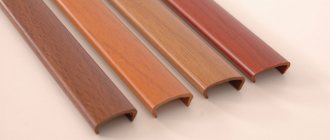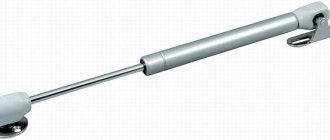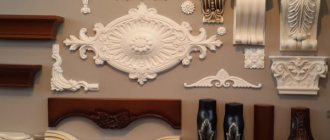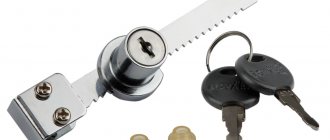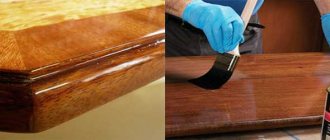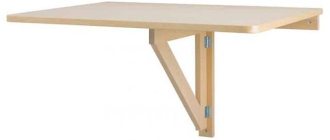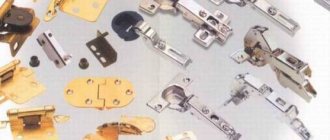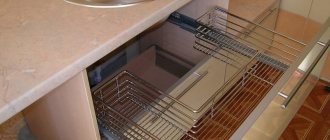Scope of gas lifts
Gas elevators have proven themselves in the automotive industry - initially they were installed on hoods and trunks, and also mounted in car doors. Lifts are needed to take on the weight of structures and protect them from damage.
Today, gas lifts, in addition to the automotive industry, are widely used in other areas:
- Furniture industry - first of all, we are talking about kitchen furniture. Gas lifts are ideal for cabinets that open upward. They prevent doors from closing spontaneously and allow you to save space in the kitchen. Also, furniture gas lifts are installed in office chairs, folding sofas, wardrobe beds;.
- Construction - used in the production of doors, window frames and glass display cases;
- Medical equipment - used in the manufacture of beds for the care of palliative patients, in the production of simulators for rehabilitation procedures and other equipment;
- Printing - gas shock absorbers are installed on the covers of copiers, scanners, MFPs and other devices;
- Weapons sphere - used for the manufacture of pneumatic weapons;
- Aerospace construction and others;
Below we will talk about the features of furniture gas lifts.
Simple models of shock absorbers for furniture
The simplest sound absorber is a silicone “drop” bumper. Externally, it is a thin disk with a diameter of up to 1 cm. Traditionally, manufacturers produce transparent, white and beige dampers that are invisible on the surface of furniture. They are glued to the end of the cabinet body in the amount of 1-2 pieces. Thanks to the self-adhesive base, installation of the bumpers does not cause any difficulties and is done extremely quickly. Soft silicone shock absorbers are inexpensive, effective and therefore very common.
Rubber shock absorbers are from the same category, with the difference that they are installed in the body during production. Black rubber bumpers are located in areas of constant impact. They are not as inconspicuous as silicone dampers, but they last a long time, serving not only as sound absorbers, but also as seals for the vestibule.
Oil dampers are also simple ones. This shock absorber is a small cylinder-capsule filled with oil with a rubber bumper at the end. The smooth movement of a door or drawer is ensured by the flow of oil - the impact softening effect occurs at the end of the closing cycle.
Varieties
Depending on the application, the design of gas shock absorbers will differ. According to the direction of action there are:
- Direct acting gas lifts compress the rod. This means that in the basic assembly the stem is fully extended. Such devices are most widely used in furniture production;
- Reverse-acting gas lifts—extend a rod recessed in the base assembly.
Also, gas lifters differ in the pressure in the cylinder. Based on this principle, a distinction is made between high and low pressure springs. High pressure lifters consist of two main elements: a rod and a cylinder, which is filled with inert gas. The design of such a device cannot be disassembled. The principle of operation is based on the fact that the gas pushes the rod out of the cylinder. Immersion of the rod into the cylinder leads to a decrease in the volume of gas storage and an increase in pressure in the spring. The low pressure lifter is made of two hollow cylinders filled with compressed gas. Compressing the gas increases its volume and increases the pressure inside the spring.
Direct action
Reverse action
Low-pressure gas lifts are characterized by an almost unlimited service life and the possibility of independent adjustment and maintenance.
Another type of gas shock absorbers is locking springs. The block can be located on the pressure tube or on the rod. Such devices are used, for example, in office chairs for height adjustment. The piston rod has a locking function with a button that opens the piston valve. After pressing the button, the rod can be pressed in or out. Releasing the button causes the rod to lock in the specified position.
There are three types of gas lift blocking:
- Standard blocking is elastic and occurs at a certain point in the piston stroke. In this case, there is a risk of arbitrary displacement;
- Ambivalent locking - when pressed in, it will be elastic, and when pulled out, it will be rigid;
- Combined locking - provides rigid fixation in both directions, preventing arbitrary movement of the spring.
Standard
Ambivalent
Cautions
Installing kitchen furniture fittings is a responsible process. It's not just that improperly installed lifts will cause doors to open and close incorrectly and unevenly, kitchen cabinets store fragile and expensive items.
Incorrectly assembled furniture can lead to broken dishes and injury. A person unfamiliar with this work and without the necessary tools will have a hard time. That is why, to install and repair furniture in the kitchen, it is always better to use the services of specialists who have the necessary knowledge and skills in this field and own all the necessary tools.
Selection rules
When choosing a furniture gas lift, you need to rely on two criteria: the compression force of the spring and the dimensions of the door to which the device will be attached.
In terms of compressive force, to withstand a load of 1 kilogram, a force of 10 Newton is required. Thus, by measuring the weight of the door, you can calculate the required value. Most gas lift manufacturers produce devices with a fixed load from 60 to 140 Newton. Knowing the weight of the door, you can easily select a suitable lift.
In addition to weight, the choice is influenced by the size of the door. The length of the device will depend on it. The longer you need the gas spring, the thicker its body should be.
Also, gas lifts allow the use of step-by-step and automatic design of locker doors. The step design is the most common mechanism with a handle on the door. Automatic design involves opening doors at the press of a button and closing them automatically after a certain time. For this purpose, the facades of cabinet furniture are equipped with an electric drive. Such devices are suitable for people who forget to close cabinets or cannot reach the handle when the door is in the open position.
Selection table
Gas lift for kitchen cabinets - main features of the system and its design
The system is designed to lift and hold in the required position the doors that open upward.
Now you don't need to hold them or fix them, the system holds them at a 90 degree angle. The main structural element is a hydraulic shock absorber, the structure of which is shown in the diagram below.
For all its external simplicity, inside the gas lift is a rather complex system
Advantages and disadvantages
Let's start with the advantages:
| Illustration | Description |
| The doors are locked in the open position . After opening, the flap becomes as in the photo and is securely fixed, spontaneous closing is excluded, which ensures convenient and safe use of kitchen cabinets. | |
| Spontaneous opening of doors is excluded . This is also an important factor, because after closing the system is fixed and can only open when its position changes by about 10 degrees. | |
| The design is easy to install . The diagram shows all the parameters that must be observed. There is nothing complicated in the work, and almost anyone can do it; below we will analyze the process in more detail. | |
| Long service life . Due to the high quality of workmanship and reliable design, the gas lift operates for many years and does not require additional maintenance or routine repairs. | |
| Convenient opening . In order for the sash to open, you need to move it a few centimeters, after which it will smoothly recline to the desired position. Closing occurs in the same way; you should pull the door towards you a few cm, after which it will carefully close. |
This option also has disadvantages, they are:
- Quite a high cost . If you have a lot of cabinets, then the costs will increase significantly;
- Products cannot be repaired . If for some reason the unit fails, the problem is solved by purchasing a new gas lift.
Execution of mechanisms
There are two main options, we will analyze each of them in detail:
- Friction (step by step) lift . The simplest and most common option, which is triggered when the door opens, just pull it slightly towards you, and the door will rise to the set position without your help. To close, you need to do the same thing - slightly pull the door towards you, and then the mechanism will automatically close and lock it;
The standard version of the lifts is an aluminum body and a steel rod
Installation methods
You can install a gas elevator yourself or contact a specialist. If you are planning to install it yourself, before starting work you will need to have:
- Roulette;
- Pencil;
- Screwdriver;
- Self-tapping screws.
Installation instructions are always included with the gas lift. Check its availability when choosing a device.
Installation of furniture gas lifts begins with marking the center of the side fasteners. It is necessary to mark 25 mm from the top and front ends on the side of the facade. Next, a side mold is attached to which the gas lift piston will be installed. The moving part of the device is attached to a spring, after which the façade is mounted on hinges. The final stage is to attach the gas lift counter fastening element using self-tapping screws, following the diagram. It is recommended to install two lifts on one façade. This will help avoid excessive stress on the gas lift and the distortions it causes.
The installation diagram provides for several door positions - when opened, it can be fixed at different angles. You can independently select the desired fixation angle during installation.
Making the markings
Installing fasteners
Installed fasteners
Assembling the box
We fasten the facades
We fasten the gas elevator with a self-tapping screw
Press until you hear a click, installation is complete.
How to regulate
The design of most popular furniture gas elevators provides for three positions of the facade when open: at an angle of 70°, 90° and 110° relative to the side of the cabinet. So that all family members, regardless of height, can reach the door of an open cabinet, an angle of 70° is best.
In order for the facade to open at this angle, you need to change the markings of the fasteners. The distance from the top edge to the center of the fastener should be 100 mm. For a 90° position, mark 90 mm from edge to center, for a 110° position, mark 80 mm. This way you can adjust the tilt angle yourself. The error when choosing this method will not exceed 5°-10°.
For more precise adjustment (if you need to achieve the same position of several facades located in a row), turn the internal thread of the cylinder of each gas elevator until the doors take the same position when open.
